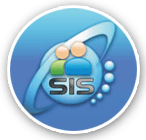Will this method of learning will help in student learning and development?
Assume a class of 4th standard students sitting quietly, writing notes as the teacher teaches for 40 minutes. After class, they were given lot of question to complete and in exam they where given a set of question and answer and finally students where evaluated based on question and answer given on class
Now think of another scenario: a group of students gathered around a table, discussing a science problem. One student suggests an idea, another challenges it, and the rest build on the discussion. They laugh, debate, and discuss the problem together.
What do you think is a better way for a child to learn and understand Science?
What do you think learning is an individual or social act?
You may agree that learning is not always individualistic; rather, learning is a social act. When students interact with others—either with peers or teachers or members of society—they learn better.
We can say that when there are opportunities to learn together, they learn more effectively. One such technique is collaborative learning, which we often use in and outside of classrooms to help learners/students construct their own meanings, ideas, and understanding.
Let's discuss some definitions of collaborative learning and understand what it truly means.
There are many definitions of collaborative learning, and one such definition was given by Smith and McGregor in 1992. According to them, collaborative learning is an umbrella term for various educational approaches involving joint intellectual effort by students or students and teachers together. This suggests that collaborative learning can occur among students with peers or between students and teachers as they work together to construct knowledge.
Another definition of collaborative learning was given by Laal and Ghodsi in 2012. According to Laal and Ghodsi, an educational approach involves groups of learners working together to solve a problem, complete a task, or create a product.
Similarly, a famous definition by Chay-Ling emphasizes that collaborative learning is based on the idea that learning is inherently a social act where participants talk among themselves.
From the above definitions we can say that collaborative learning involves two or more individuals learning together. This may include peer groups, small groups, or even larger groups. In such settings, learners share resources, knowledge, and skills, and they construct their understanding through discussion, critique, and guidance.
Main benefits of Collaborative learning are knowledge sharing, problem-solving, and the cumulative efforts of groups to create new understanding.
Now, understand the theoretical foundation of collaborative learning. The concept finds its roots in the Zone of Proximal Development (ZPD), propounded by Vygotsky in his social constructivist theory. According to ZPD, there are three areas: first, tasks that a learner can do alone; second, tasks they can accomplish with guidance; and third, tasks they cannot do even with help. Through collaborative learning, learners move from one level to another, supported by peers and teachers.
After understanding the definitions and benefits, we can explore the significance of collaborative learning.
• One significant benefit is that collaborative learning can develop both technical and managerial skills.
• Industrial practitioners often highlight this in workplace training.
• It also enables remote learning, as learners can work together on online platforms, collaborating across distances.
• Moreover, collaborative learning emphasizes cultural diversity and behavior modification, as learners from varied backgrounds come together to solve problems.
You may have also encountered the term "cooperative learning," which is often confused with collaborative learning. Although they are used interchangeably, they have fundamental difference. In cooperative learning, the teacher assigns roles, observes progress, and provides help as needed. It’s a teacher-centered approach. In collaborative learning, however, participants assign their own roles, and the focus is more learner-centered, with individual and group assessments being equally important.
How to implement collaborative learning in classrooms? and few well known strategies to implement it.
• Think-Pair-Share: In this method, a problem related to higher-order thinking is introduced by the teacher. Learners think about solutions individually, then share their ideas with peers in small groups, and finally discuss with the whole class.
• Catch-Up: In this method, the teacher pauses during a lecture to let students compare notes and ask questions. This encourages peer feedback and collaborative clarification.
• Fishbowl Debate: In this method, students are divided into three groups: one supports an idea, another opposes it, and the third group observes and evaluates the arguments presented.
• Case Study: It's a most common method, used in psychology, marketing schools, in this method students are divided into groups and given case studies of the same difficulty. After analyzing their cases, they present their solutions to the class.
• Team-Based Learning: Teachers assign specific tasks to groups, such as reading a book or completing an experiment. Students take group exams, agreeing on answers and also acknowledging individual contributions.
With advancements in technology, collaborative learning now extends to Online platforms. Various methods include:
• Collaborative Networked Learning (CNL): In this method, students learn together using electronic devices across locations, sharing ideas over a network to solve problems.
• Computer-Supported Collaborative Learning (CSCL): This method uses computers and the internet, allowing students to share and critique ideas online.
• Wikipedia-Supported Collaborative Learning: Wikipedia serves as a collaborative learning tool where individuals contribute to shared knowledge, rectifying errors and enhancing the content collectively.
• Virtual World Collaborative Learning: Using tools like 3D models, web conferencing, and Google’s suite of collaborative tools, students can learn together in a virtual space.
In conclusion, let our students/learners and teachers embrace collaboration in learning, using both traditional techniques and modern technological platforms. Research shows us that when multiple minds work together, solutions emerge more effectively. So, let our students explore problems, debate, discuss, and create knowledge collaboratively.







